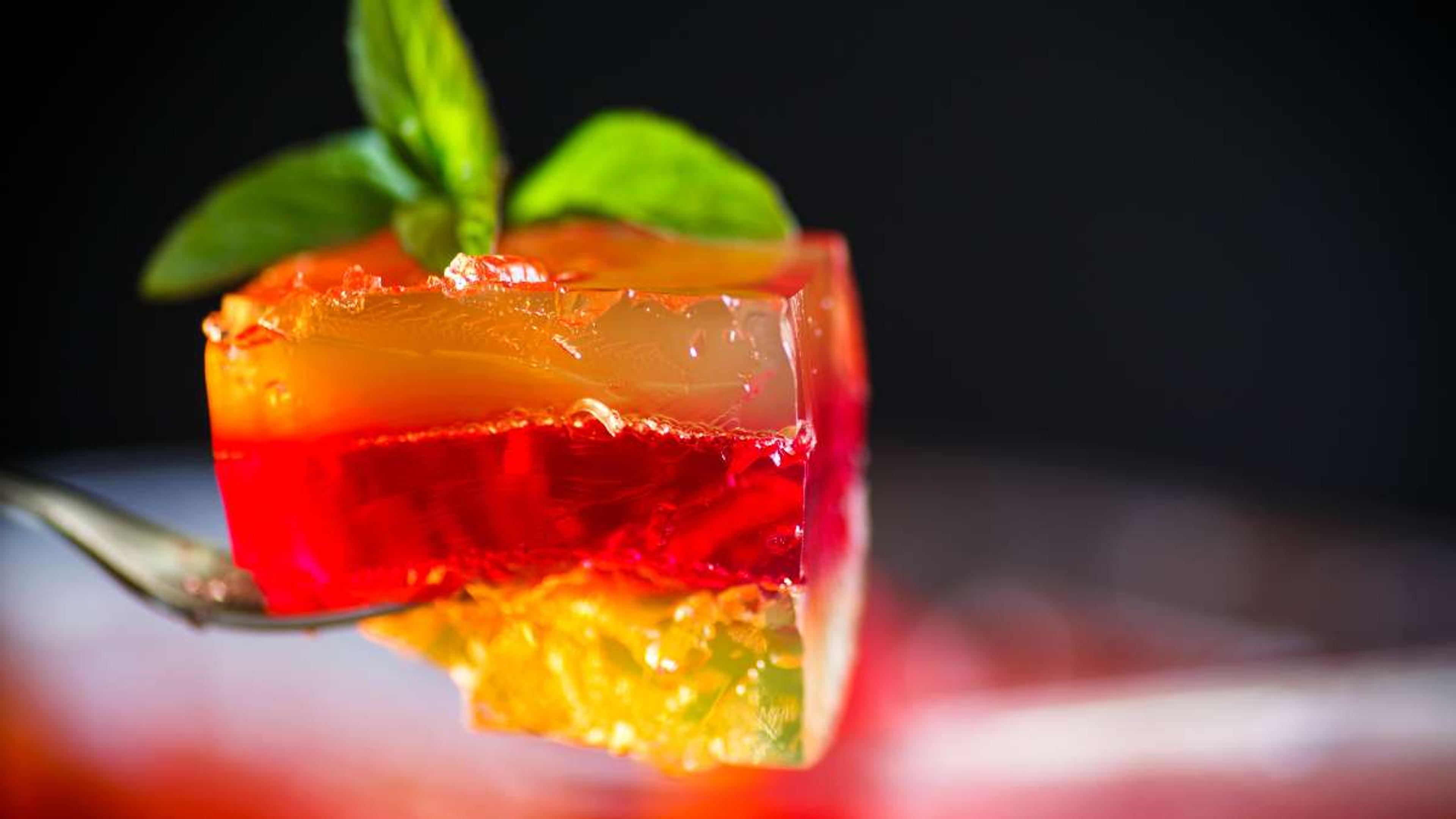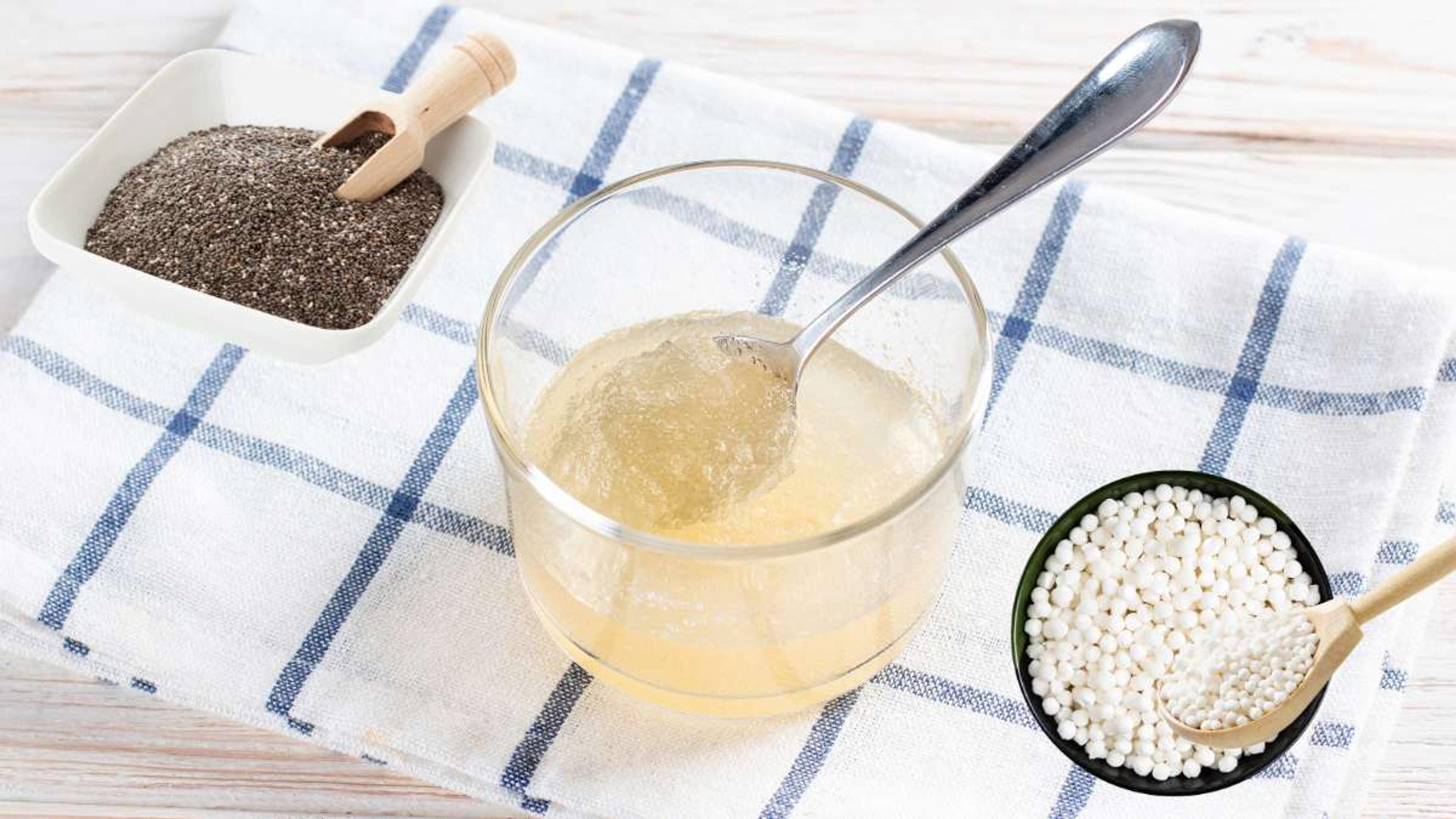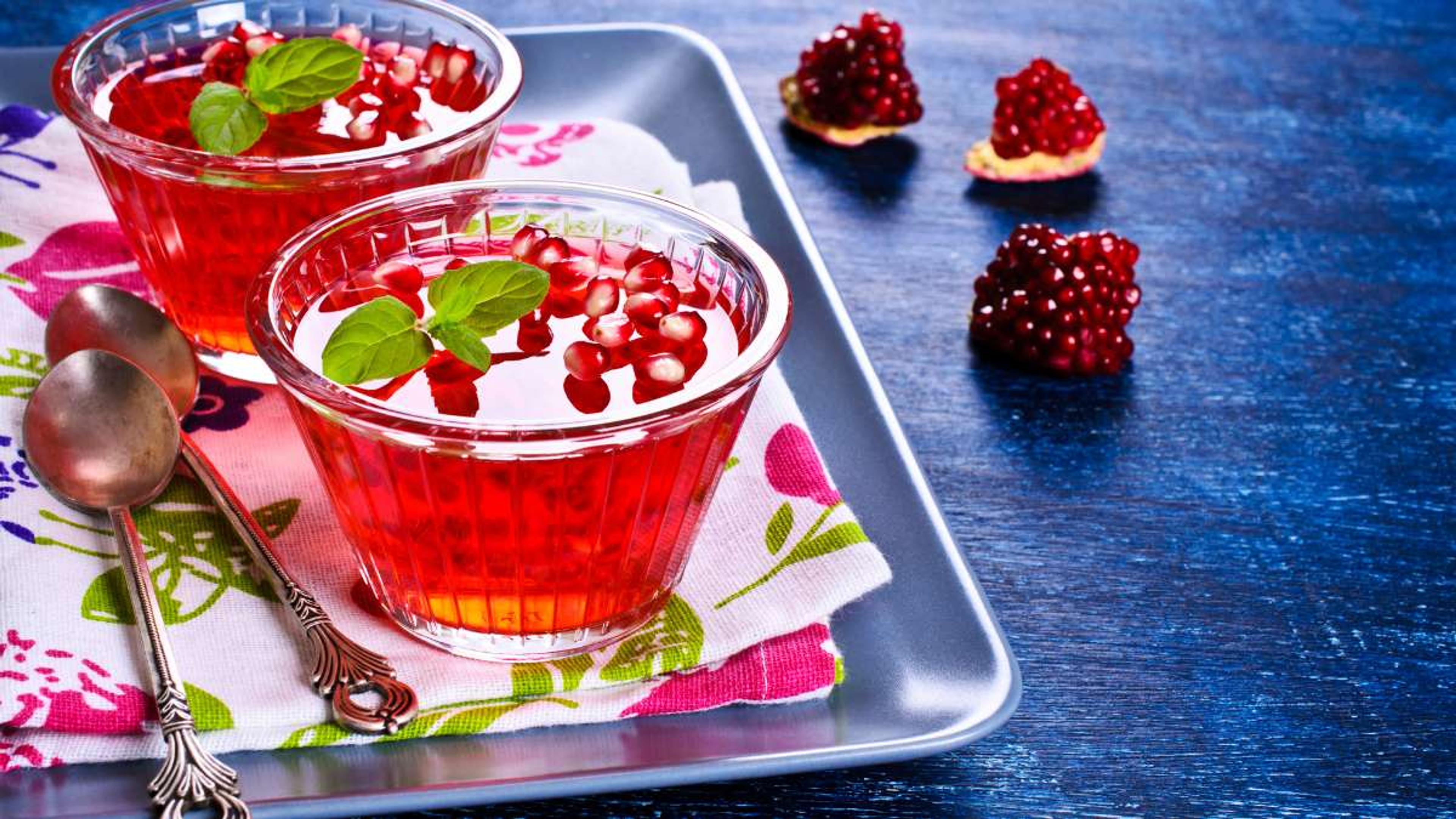Unveiling the Mystery: Is Jelly Vegan?

- Key Takeaways
- Vegan Diet and its Principles
- What is Jelly and How is it Made?
- Vegan Controversy Surrounding Cane Sugar
- Vegan Alternatives to Gelatine in Jelly
- Identifying Vegan Jelly Brands and Products
- Making Vegan Jelly at Home
- Conclusion
- FAQs
Are you wondering if jelly is vegan? Well, you're not alone. Many people following a vegan diet often find themselves confused about the status of certain foods, including jelly.
But fear not! We are here to shed some light on this issue and help you make informed choices.
So let's dive in and discover the truth about whether jelly is truly vegan-friendly or not.
Key Takeaways
- Jelly made with gelatin is not vegan-friendly as gelatin comes from animal parts like bones and skin.
- Cane sugar used in jelly may not be vegan if it is refined using animal bone char, but alternatives like beet sugar exist.
- Vegan alternatives to gelatine include plant-based gelling agents like agar agar, which can be used to make delicious vegan jelly desserts.
- When buying store-bought jelly, read the labels carefully for ingredients like gelatin and look for certifications indicating that the product is suitable for vegans.
Vegan Diet and its Principles
A vegan diet is all about eating plant-based foods. That means no meat, dairy, or other animal products. This includes fruits, veggies, nuts and seeds, and whole grains. More people choose this diet for their health.
It's proven that eating lots of plant foods can help you stay healthy. But sticking to a vegan diet is not always easy. Some things like jelly may seem vegan but might not be due to hidden animal products in them.
The Common Confusion
Many people find it hard to tell if some foods are vegan. Jelly is one of these foods. Most jelly has gelatin in it, an animal product. This means typical jelly is not vegan-friendly.
Some also mix up jelly with jam or preserves. Many candies that look like jelly have gelatin too, so they're not good for vegans either. It's key to know what's in the food you buy and eat.
Making sure whether a food is vegan can be tough but it's important for those who follow a strict vegan diet.
What is Jelly and How is it Made?
Jelly is a popular dessert that has been enjoyed for centuries. Jelly made in the traditional way is not considered vegan-friendly, particularly due to its ingredients such as cane sugar and gelatine. However now, there are vegan alternatives to gelatine that can be used to make jelly without the use of animal products.

Traditional Ingredients Used
Jelly is made by combining three main things. These are;
- Fruit juice or puree: fruit juice gives the jelly its taste
- Sugar: adds sweetness
- Agelling agent called gelatin: makes the jelly firm and wobbly in form
To make jelly, these ingredients are boiled together until thick. Next, they cool down and become firm like jello or pudding.
Is Gelatin Vegan?
Gelatine plays a big part in making jelly. It comes from animal bones and skin of cows or pigs. The job of gelatine is to set the jelly and make it firm. But, if you are vegan, you can't eat gelatine because it's made from animals.
So, traditional jelly is not for vegans. There are other ways to make jelly that vegans can eat though!
Vegan Controversy Surrounding Cane Sugar
Cane sugar is often used as a sweetener in jelly, but there is controversy surrounding its vegan status due to the use of animal bone char during the refining process. Read on to learn more about this issue and how it affects the vegan status of products containing cane sugar.
Use of Animal Bone Char
Animal bone char is sometimes used in the process of refining cane sugar. Bone char is made from the bones of cattle from countries like Afghanistan, Argentina, India, and Pakistan.
It is used to bleach and filter the cane sugar, resulting in a white color. However, not all cane sugar is refined using bone char. There are alternatives available, such as beet sugar which does not require the use of bone char in its refining process.
It's important for vegans to be aware of this aspect when choosing sweeteners and products containing cane sugar.
Is Bone Char Vegan?
Products containing cane sugar may not be considered vegan if the sugar is refined using bone char. Bone char is made from animal bones and is used to filter and decolorize sugar. While beet sugar is always considered vegan, cane sugar filtered with bone char poses a dilemma for some vegans.
They choose to avoid it because of its association with animal-derived products. However, others believe that focusing on larger issues, like factory farming, is more important. It ultimately comes down to personal ethics and choices when it comes to determining the vegan status of products containing cane sugar.
Vegan Alternatives to Gelatine in Jelly
Agar agar is a popular plant-based gelling agent that can be used as an alternative to gelatine in jelly-making. Read more to discover other vegan options for making delicious, cruelty-free jellies at home.

Plant-based Gelling Agents
- Agar agar is a plant-based gelling agent that is often used as a substitute for gelatin in vegan and vegetarian recipes. It is derived from seaweed and is considered a vegetarian alternative to gelatin, which is made from animal bones. It has similar properties to gelatin and can be used in desserts like jellies, custards, and mousse as a thickening and gelling agent. It allows vegans and vegetarians to enjoy a wide variety of dishes traditionally made with gelatin while still following their dietary preferences.
- Pectin is a natural plant-based gelling agent that is commonly found in fruits, such as apples and citrus fruits. It is often used in jams, jellies, and fruit-filled desserts.
- Carrageenan, on the other hand, is derived from seaweed, a red algae, and is frequently used as a stabilizer and thickening agent in dairy-free products like plant-based milks and yogurts.
- Tapioca starch, derived from the cassava plant, can be used as a gelling agent in a variety of desserts, including jellies. Not only is it vegan-friendly, but it also adds a delightful texture to your homemade jellies.
- Chia seeds can also be used as a gelling agent. When mixed with liquid, chia seeds create a gel-like substance that can be used to thicken and set your jellies. They are packed with nutrients like omega-3 fatty acids, fiber, and protein, making them a healthy choice for both vegans and non-vegans alike.
- Xanthan gum: This plant-based gum, derived from corn, soy or wheat, is commonly used as a thickening agent and can also be added to homemade jelly recipes for a gel-like consistency. Check to see if store-bought xanthum gum is vegan.
- Cornstarch: A pantry staple derived from corn, cornstarch can be used as a thickener in fruit puree or juice-based jellies. It gives the jelly a smooth texture.
These vegan alternatives offer similar gelling properties to gelatin but without the use of animal-derived ingredients. They provide a great option for those who want to enjoy delicious jellies without compromising their vegan values.
Not only do these vegan alternatives provide a cruelty-free option for gelatin, but they also offer unique flavors and textures that can elevate your jellies to a whole new level.
Rise of Vegan-Friendly Jellies in the Market
Vegan-friendly jellies are becoming increasingly popular in the market. These jellies provide a cruelty-free alternative to traditional gelatine-based ones. Instead of using animal-derived ingredients like gelatine, vegan jellies utilize plant-based gelling agents such as agar agar, which is derived from seaweed.
With the growing demand for vegan options, more companies are offering vegan jelly brands, giving consumers a wider range of choices when it comes to enjoying their favorite sweet treats without compromising their ethical beliefs.
Identifying Vegan Jelly Brands and Products
Learn how to determine the vegan status of store-bought jelly and discover popular vegan-friendly brands. Read on to find out more!
Determining the vegan status of store-bought jelly
To determine if store-bought jelly is vegan, it's important to;
- Read the ingredients list carefully
- Look out for gelatin, a common ingredient derived from animals that is used in non-vegan jellies
- Opt for brands that use plant-based gelling agents like agar-agar or carrageenan.
- Avoid jellies containing cane sugar as it may be refined using bone char, which makes them non-vegan.
Remember to always check labels and look for certifications indicating a product is suitable for vegans.
Popular vegan jelly brands and their ingredients.
Popular vegan jelly brands include:
- Hartley's: Their jelly pots are usually vegan and made with ingredients like sugar, water, fruit juice concentrate, gelling agents (pectin or agar), citric acid, and natural flavorings.
- Naturelly: Known for their vegan jelly pouches made with ingredients like fruit juice concentrate, gelling agents (pectin or carrageenan), water, citric acid, and natural flavors.
- Supermarket own brands: Many supermarket chains offer their own vegan-friendly jelly products, which typically contain similar ingredients to other brands mentioned above.
- Wibble: This brand offers vegan-friendly jelly pots made from fruit juice concentrates, carrageenan as a gelling agent, water, natural flavors, and citric acid.
- FruityPot: Another option for vegans is FruityPot jelly cups that are made with fruit juice concentrates, pectin as the gelling agent, water, citric acid, and natural flavors.
Tips for reading labels and identifying vegan-friendly jellies.
To determine if a jelly is vegan, here are some tips for reading labels and identifying vegan-friendly options:
- Look for "Suitable For Vegans" or "Certified Vegan" labels on the packaging.
- Check the ingredient list for any animal-derived ingredients such as gelatine, collagen, or dairy products.
- Pay attention to sweeteners like cane sugar, as it may be processed using bone char, making it non-vegan.
- Avoid jellies that contain high fructose corn syrup, which can be derived from genetically modified corn.
- If unsure about an ingredient, research its source to confirm if it is vegan-friendly.
- Be aware that terms like "natural flavors" or "natural colors" could potentially include animal-derived ingredients.
- Consider purchasing from brands that specialize in vegan food products and have a clear commitment to cruelty-free practices.
Making Vegan Jelly at Home
To make vegan jelly at home, you can use plant-based thickeners like agar agar instead of gelatine. Try it now!

Ingredients:
- 2 cups fruit juice (such as pomegranate, grape or strawberry)
- 1 tablespoon agar agar flakes
- Sweetener of your choice (optional)
Steps:
- In a saucepan, heat the fruit juice over medium heat until it starts to simmer.
- Gradually sprinkle the agar agar flakes into the simmering juice while whisking continuously.
- Reduce the heat to low and let it simmer for about 5 minutes until the flakes dissolve completely.
- If desired, add sweetener to taste and stir until dissolved.
- Remove from heat and allow the mixture to cool slightly before pouring into moulds or containers.
- Refrigerate for at least 2 hours or until set.
- Once set, enjoy your homemade vegan jelly!
More DIY jelly recipes
Making your own vegan jelly at home is easy and fun. You can create delicious and healthy desserts using fruit juices or purees instead of gelatin-based jellies.
Here are some quick and simple recipes for you to try:
1. Homemade Strawberry Jelly
- Ingredients: 2 cups of fresh strawberries (pureed), 1 cup of fruit juice (such as apple or grape), 1/4 cup of sweetener (such as maple syrup or agave nectar), 2 tablespoons of agar agar powder.
- Instructions: In a saucepan, combine the strawberry puree, fruit juice, sweetener, and agar agar powder. Bring the mixture to a boil over medium heat, stirring constantly. Once boiling, reduce the heat to low and simmer for about five minutes. Remove from heat and let it cool slightly before transferring to molds or containers. Refrigerate for at least two hours to set.
2. Mixed Fruit Juice Jelly
- Ingredients: 2 cups of mixed fruit juices (such as orange, pineapple, and mango), 1/4 cup of sweetener (such as honey or maple syrup), 2 tablespoons of agar agar powder.
- Instructions: In a saucepan, combine the mixed fruit juices, sweetener, and agar agar powder. Bring the mixture to a boil over medium heat while continuously stirring. Once boiling, reduce the heat to low and simmer for about five minutes. Remove from heat and let it cool slightly before pouring into molds or containers. Refrigerate for at least two hours until set.
3. Refreshing Citrus Jelly
- Ingredients: 1 cup of citrus juice (lemon, lime, or orange), 1 cup of watermelon puree, 1/4 cup of sweetener (such as agave nectar or stevia), 2 tablespoons of agar agar powder.
- Instructions: In a saucepan, combine the citrus juice, watermelon puree, sweetener, and agar agar powder. Stir well and bring the mixture to a boil over medium heat. Once boiling, reduce the heat to low and simmer for about five minutes, stirring continuously. Remove from heat and let it cool slightly before pouring into molds or containers. Refrigerate for at least two hours until fully set.
Benefits of Homemade Vegan Jelly
Homemade vegan jelly offers several benefits for those following a plant-based lifestyle.
- Firstly, it is made using simple and natural ingredients, such as sugar, pectin, and fruit juices. This means you have control over what goes into your jelly and can avoid any animal-derived products or additives that may be present in store-bought versions.
- Another benefit of homemade vegan jelly is that it can be tailored to suit your preferences. You can experiment with different flavors by using various fruit juices or purees, allowing you to create unique combinations that cater to your taste buds.
- Additionally, making jelly at home allows you to adjust the sweetness level according to your liking.
- Furthermore, homemade vegan jelly is lower in calories compared to traditional desserts. By using less sugar and choosing healthier sweeteners like maple syrup or agave nectar instead of refined cane sugar, you can indulge in a guilt-free treat without compromising on flavor.
Conclusion
Make ethical choices and explore the world of vegan jelly to enjoy delicious cruelty-free desserts. Read more about identifying vegan jelly brands, making homemade vegan jelly, and understanding the controversy surrounding cane sugar in our blog post.
FAQs
1. Is jelly vegan?
Most jelly is not vegan because of added sugar or glucose-fructose syrup, but some types like citrus fruits jelly with no additives are considered vegan.
2. Can I eat peanut butter and grape jelly if I'm a Vegan?
It depends on the type of grape jelly used. For example, Concord grape jelly often contains added sugars which may not be suitable for vegans.
3. Are there any vegan alternatives to jellies found in stores like Amazon?
Yes, you can find many vegan options for toast spreads similar to standard jellies on Amazon or speciality food stores that use only plant-based ingredients.
4. Are popular candies such as gummy bears and Jell-O considered Vegan friendly?
No, most gummy bears and Jell-O products are made with gelatin derived from animals so they're not usually suitable for vegans; however, there are items like Vegan Jell-O available in the market.

